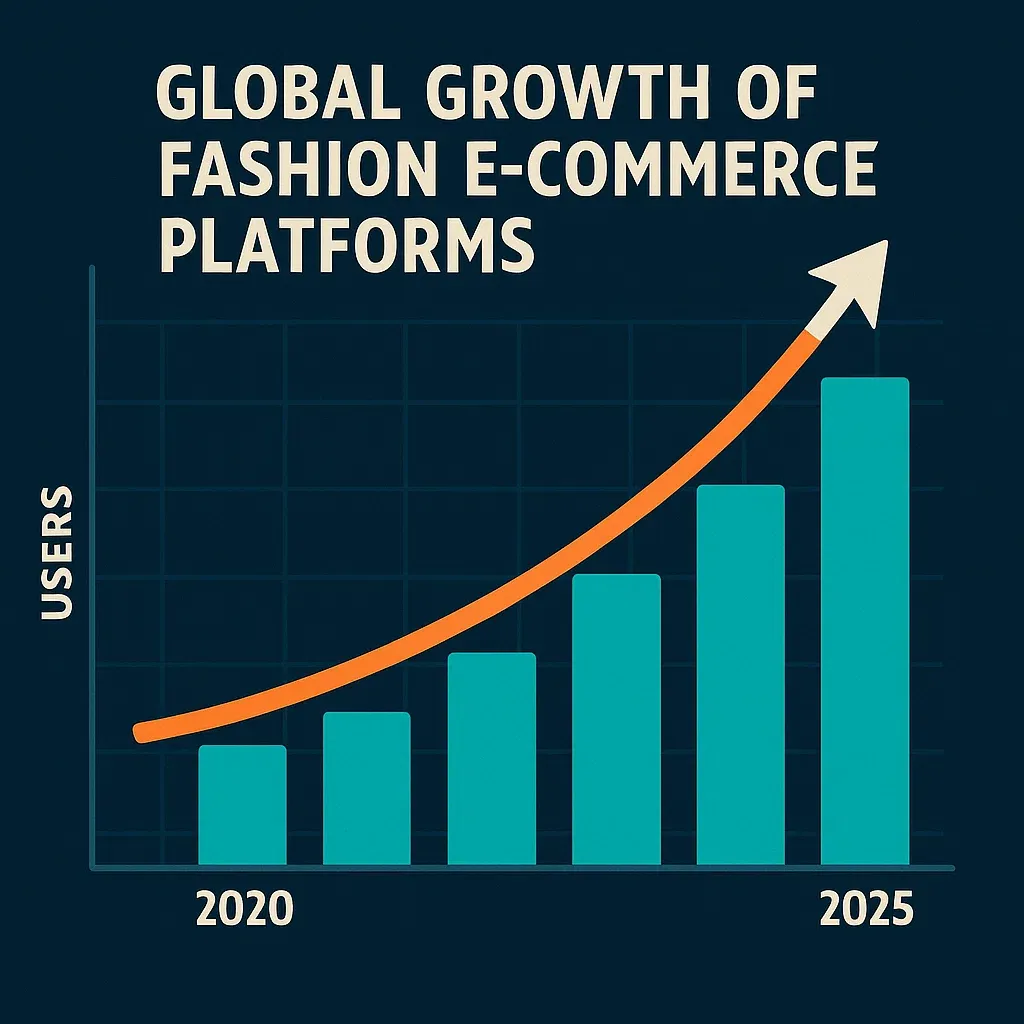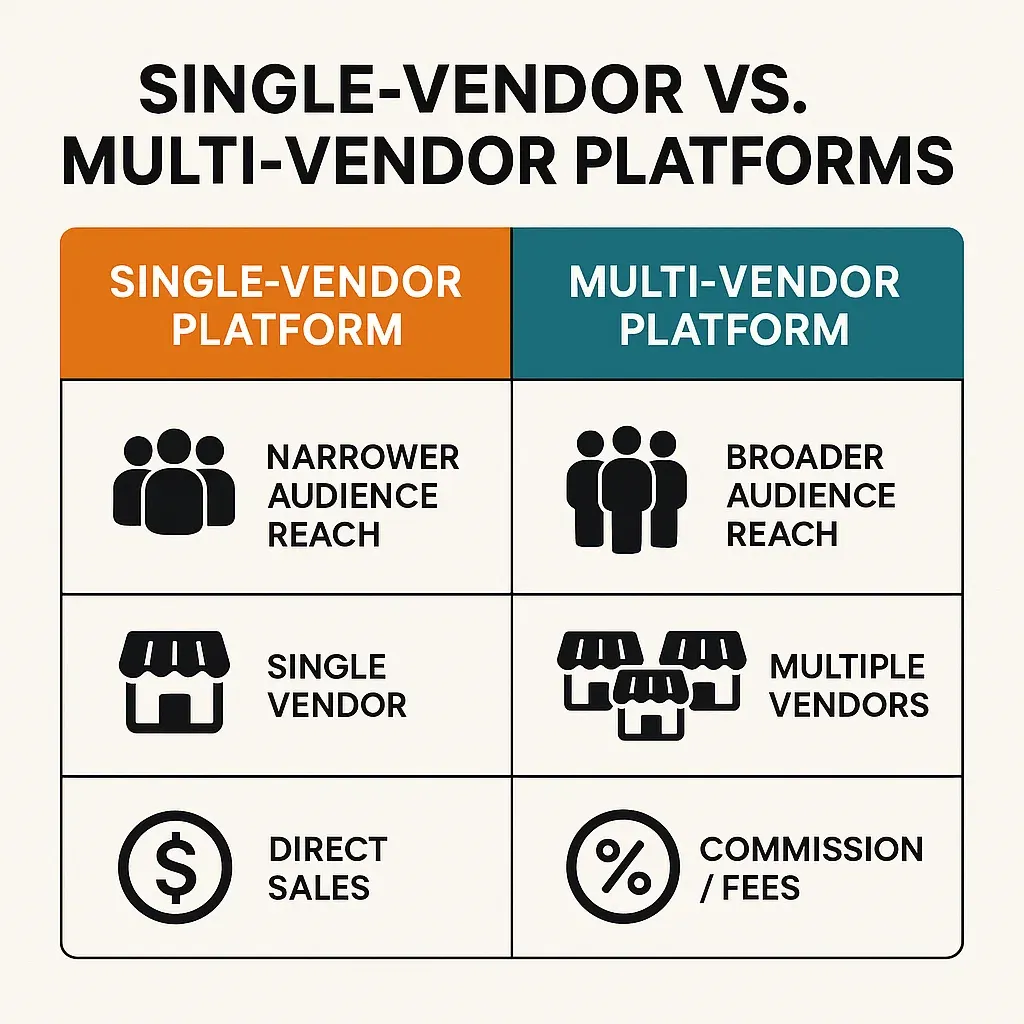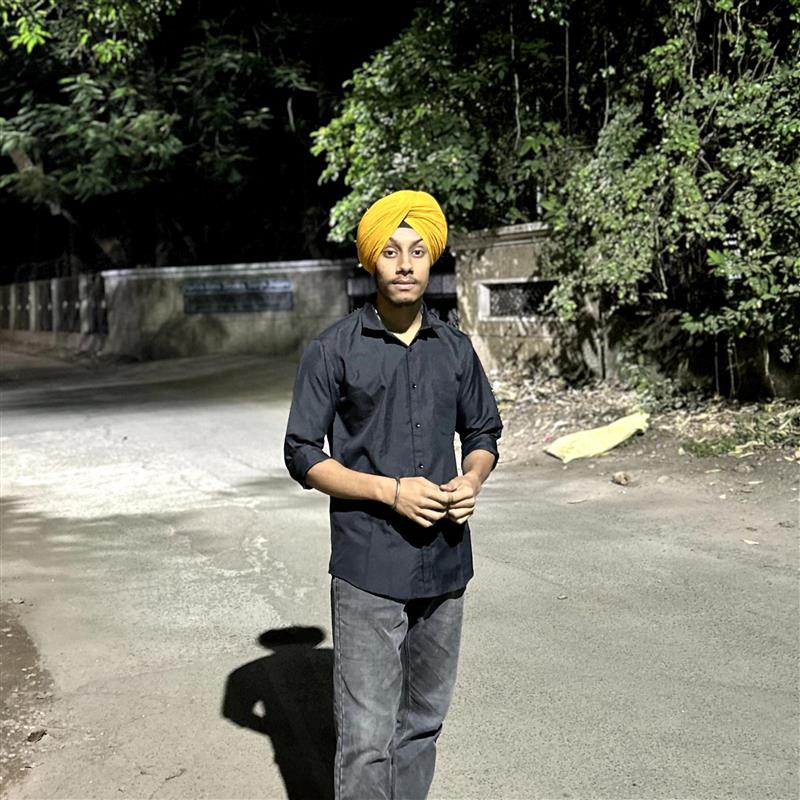The fashion industry has always been a blend of creativity and commerce. But in 2025, it’s the technology behind the scenes that’s dictating who gets ahead. Among the fastest-rising digital business models are multi vendor fashion apps—platforms that let multiple brands, designers, and boutiques sell under one roof. Whether you’re a startup founder, a serial entrepreneur, or a digital agency planning the next big launch, this space holds goldmine potential.
From Statista’s global fashion eCommerce predictions to consumer behavior shifts favoring curated multi-brand experiences, this blog explores why multi vendor fashion apps are at the forefront of profitable tech ventures in 2025. We’ll dive into top app ideas, monetization models, must-have features, cost breakdowns, and how clone solutions from companies like Miracuves can fast-track your success.

Read more: How Much Should You Invest to Launch a Multi-Vendor Delivery Platform?
Why Multi Vendor Fashion Apps Are a Hot Opportunity in 2025
The global fashion eCommerce market is projected to exceed $1.5 trillion by 2027 (Statista), with multi-brand platforms contributing a large share of transactions. Consumers are increasingly drawn to apps that let them compare styles, prices, and brands in one place—a convenience-driven habit formed during the pandemic and now solidified.
On the investment front, fashion-tech startups raised over $2.3 billion globally in 2024 (CB Insights), particularly in marketplaces and AI-powered curation tools. At the same time, direct-to-consumer (DTC) fatigue has set in, pushing smaller labels to seek exposure on high-traffic multi vendor platforms.
Despite the growing demand, there’s still a significant gap in niche fashion marketplaces—be it for sustainable brands, local designers, or hyper-personalized luxury. This makes 2025 the perfect year to capitalize on the momentum.

Top Profitable Multi Vendor Fashion App Ideas to Launch in 2025
1. Sustainable Fashion Marketplace
A curated platform connecting users with eco-conscious and ethical fashion brands offering organic, recycled, and low-impact apparel. It caters to the growing demand for sustainable living among Gen Z and Millennials. Monetized via vendor subscriptions, commissions, and green brand ads.
- Monetization strategy: Commission per sale, vendor subscription plans, ads from sustainable product partners.
- Why it works in 2025: Gen Z and Millennials are increasingly choosing purpose over price. This niche has rising traction and long-term brand loyalty.
2. Luxury Designer Outlet App
An exclusive app for authenticated, discounted luxury fashion from top-tier designers. Combines brand trust with affordability to appeal to high-end bargain hunters. Generates revenue through membership fees, affiliate deals, and vendor listings.
- Monetization strategy: Premium membership fees, affiliate deals, vendor listing fees.
- Why it works in 2025: Demand for luxury resale and outlet shopping is booming, with authentication and trust being key differentiators.
3. Local Boutique Discovery App
Geo-targeted marketplace showcasing indie boutiques and handcrafted fashion from nearby vendors. It builds community and supports local fashion economies. Monetization comes from location-based promos and vendor advertising.
- Monetization strategy: Location-based promotion, featured vendor packages, delivery fee markup.
- Why it works in 2025: Consumers crave hyper-local and unique items. This builds community while boosting underrepresented vendors.
4. Gender-Neutral Fashion Marketplace
An inclusive shopping app offering gender-fluid fashion collections across multiple progressive brands. Ideal for younger audiences seeking representation and self-expression. Profits come from subscription boxes and creator collaborations.
- Monetization strategy: Creator collaborations, co-branded capsule collections, subscription boxes.
- Why it works in 2025: Fashion inclusivity is more than a trend—it’s a movement. This niche is underserved and culturally resonant.
5. Rental & Resale Fashion App
A hybrid platform enabling users to rent or resell fashion items with smart filtering and logistics support. Taps into the booming circular economy and conscious consumerism. Monetizes through service fees and premium rental tiers.
- Monetization strategy: Service fee per transaction, damage protection fee, subscription tier for frequent renters.
- Why it works in 2025: Circular fashion is growing fast, with users seeking access over ownership.
6. Kidswear Fashion Bazaar
A multi-brand app for kids’ fashion featuring customizable sizing, age filters, and seasonal edits. Solves the hassle of shopping for growing kids. Generates income from vendor fees and child-focused brand ads.
- Monetization strategy: Vendor monthly fees, featured listings, in-app advertising from toy/fashion partners.
- Why it works in 2025: Parents seek convenience and quality when shopping for fast-growing kids—this model solves both.
7. AI-Powered Fashion Stylist App
An intelligent fashion app that uses AI to recommend personalized outfits from partner vendors. Enhances user engagement and shopping ease through virtual styling. Revenue flows from affiliate sales and stylist upgrade options.
- Monetization strategy: Affiliate sales, premium virtual stylist upgrades, in-app brand sponsorships.
- Why it works in 2025: Consumers want personalization. AI styling improves conversion and stickiness.
What Makes an App Profitable in the Multi Vendor Fashion Niche?
The most profitable multi vendor fashion apps share a few core traits:
- Recurring Revenue Models: Think vendor subscriptions, user memberships, or loyalty perks.
- High Retention Rates: Features like saved wishlists, smart recommendations, and quick reordering keep users coming back.
- Low Operational Overhead: Smart automation for inventory, vendor management, and shipping reduces burn.
- Efficient Acquisition Funnels: Referral systems, social integration, and influencer campaigns drive organic growth.
Launching from scratch is risky and resource-intensive. That’s why many smart founders opt for clone app development—ready-made, customizable solutions that drastically cut development time, cost, and risk. Platforms like Miracuves offer white-label multi vendor marketplace apps optimized for performance and scalability.
Cost to Build a Multi Vendor Fashion App in 2025
Depending on features and complexity, here’s a rough cost range:
- Basic MVP App: $12,000 – $20,000
- Mid-Tier Custom Platform: $25,000 – $50,000
- Full-Scale Enterprise Solution: $60,000 – $150,000+
Launch Your Multi-Vendor Fashion App in Just 3–6 Days — Go Live with Miracuves from $2,500 to $3,000 and bring top brands and shoppers together in style!
Key factors include:
- Platform(s): Android, iOS, or both?
- Tech Stack: Native vs cross-platform frameworks
- Backend Logic: Vendor panel, inventory sync, order routing
- UI Complexity: Filters, search, personalization, animations
By using a clone app from Miracuves, you can slash the dev cost by up to 60% while going live in weeks instead of months.
Read more: Breaking Down the Development Cost of a Multi-Vendor Fashion Marketplace Platform
Tips for Founders to Launch a Successful Multi Vendor Fashion App
- Start With an MVP: Validate your idea fast. Focus on a core feature set, then iterate.
- Prioritize UI/UX: First impressions matter—fashion is a visual industry. Clean, intuitive design builds trust.
- Test the Market: Use waitlists, landing pages, and social teasers to gauge demand before investing big.
- Think Long-Term: Choose a scalable backend, plan for integrations (payment, logistics, analytics), and set up performance monitoring.
Post-launch marketing is just as critical. Lean on influencer partnerships, user-generated content, and SEO to scale organically.
Conclusion
The multi vendor fashion app space is more than just a trend—it’s the future of fashion commerce. From sustainable clothing and gender-neutral styles to hyper-local boutique discovery, the demand for curated, multi-brand digital experiences is exploding in 2025.
For entrepreneurs looking to capitalize on this wave, the window of opportunity is now. With scalable clone app solutions from Miracuves, you can launch faster, spend smarter, and compete like a pro from day one.
At Miracuves, we help innovators launch high-performance app clones that are fast, scalable, and monetization-ready. Ready to turn your idea into reality? Let’s build together.
FAQs
Q:1 How much does it cost to build a multi vendor fashion app?
The cost to build a multi-vendor fashion app with Miracuves typically ranges from $2,500 to $3,000, with a 3-6 day go-live setup.
Q:2 What features should a successful multi vendor fashion app include?
Vendor dashboards, advanced filtering, visual search, wishlists, and seamless checkout are essential.
Q:3 Is it better to build from scratch or use a clone solution?
For speed, budget, and market fit, clone solutions are often the smarter choice—especially when time-to-market matters.
Q:4 How do these apps generate revenue?
Through commissions, subscriptions, ads, affiliate deals, and upsells like stylist services or premium features.
Q:5 Can I customize a clone app for my niche idea?
Yes, white-label clones from Miracuves can be tailored extensively—from branding to feature sets.
Q:6 How long does it take to launch with a clone app?
With the right vendor, you can go live in as little as 4–6 weeks depending on required customizations.
Related Articles:








